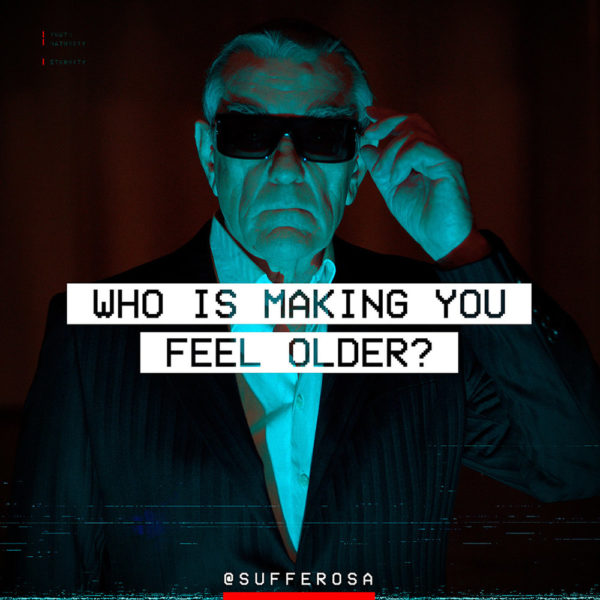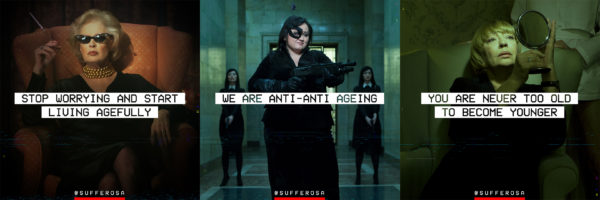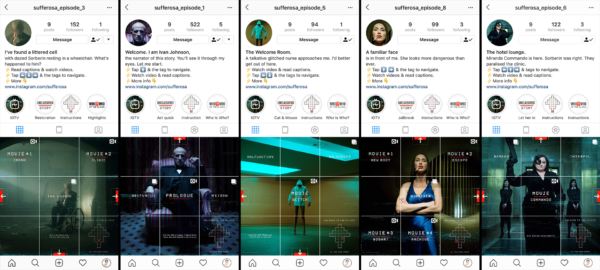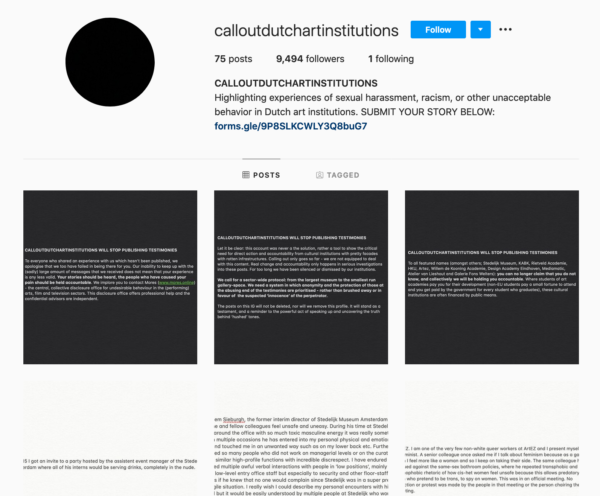It’s important to be critical of Facebook. Their current financial model harms the community. The way their platforms are organised and how they collect and sell data from users without their consent and without being transparent must change. Yet even the #deletefacebook movement hasn’t caused us to massively delete our profiles. And many people who did delete their Facebook account are still active on Instagram or using WhatsApp. This shows that the tools Facebook is offering do have many positive qualities for us. In fact, it is precisely these qualities—offering the social ties that we crave as humans, the joy of positive reinforcement, access to unprecedented amounts of information—that draw people to these platforms. But as Shoshana Zuboff writes in Surveillance Capitalism, “surveillance capitalism is not technology; it is a logic that imbues technology and commands it into action….the digital can take many forms depending upon the social and economic logic that bring it to life.” Can we try to separate the technologies that make up Facebook, from the economic logic that currently guides it? With this article we focus on the potential Facebook’s platforms give us.
we can get in touch with celebrities
Facebook’s mission statement is to bring people closer together and build relationships. With their platforms, the company not only provides an online public square where these meetings can take place. It also acts like the glue holding our online relationships together. If you’re in a cafe having a nice conversation with a person you don’t know yet, Facebook’s advanced algorithm system ensures that this person will probably show up in the “people you may know” by the time you’re home. The company stretched the definition of ‘friends’. Since the Facebook-era, it’s quite normal to have more than 700 friends, and we all know they’re not all real friends. For most people, their Facebook friends list is a collection of people they’ve met at some point in their life. In addition to really close friends or family, the list also contains exes, friends of exes, former colleagues and classmates, very distant relatives, or even vague acquaintances. On Instagram, ‘friends’ are called ‘followers’, making the barrier to connect with someone even lower.
Although it’s important to realise that the friend system is financially beneficial for Facebook as a company. With this article we won’t focus on this point, but you can read all about it in our interview with policy consultant Joe McNamee. Instead, we want to stay positive and focus on the benefits for us, their users. Thanks to Facebook’s platforms, we’re not only able to keep up to date with the activities our friends and vague acquaintances are doing or stay in contact with family members on the other side of the world, we’re also able to connect with people who would otherwise be unreachable, like celebrities. Mainly because of Instagram, the lives of celebrities have never been more public. Via their Stories they show themselves walking their dog and they use their profile to share important personal news, such as the first photo of a pregnant belly. That way, they can keep these kinds of announcements in their own hands. Thanks to Instagram, artist and fan Lisa Gliederpuppe became friends with her idol: Paris Hilton. Lilian asked her how that happened.
Lilian Stolk: Can you tell us a little bit about your obsession with Paris Hilton. Why do you find her so interesting?
Lisa Gliederpuppe: 10 years ago, my performance teacher Margareth Dragu instructed me to perform an activity for 5 minutes every day to create a collection. I started searching the web to collect images of Paris Hilton. Inspired by what I saw, I made drawings, collages and wrote short texts and poems, which I posted on my blog and on the forum of the Paris Hilton website. That way, I got to know her.
Paris became famous for her appearance in the reality series ‘The Simple Life’, in which she and her friend Nicole Richie turn things upside down. With a lot of discomfort and humour, the two high society girls try to survive without luxury while living with different farming families in America. The success of the series made the young Paris Hilton more than welcome at any high society event.
This opened up a world for her.
In 2006, Paris Hilton was ranked #1 as the top search in Google. She was a perfect target for the paparazzi. Both her behaviour on the series and in public life left the mark on who she is to many people: a celebutante. Famous for being famous.
For me, Paris Hilton is not a celebutante, but a survivor. The way she expresses herself touches me. In 2004, Paris was a victim of a sex scandal. The sex tape ‘One night in Paris’ was put on the market by her ex-boyfriend and his brother. For them it was a way to cash in. While Paris Hilton was being a victim, she was seen as a fool.
Her dream of being loved for elegance and goodness, like Princess Diana, was destroyed. But Paris did not give up. She became a rock star, a mermaid, a femme fatale, a Disney princess, and so on. Paris is like a real Barbie. She speaks in a high voice in public. The interior of her house resembles Marie Antoinette’s room. In her garden, there’s a miniature version of her own house for her dogs. On her couch are pillows that depict her head. And Paris invented the selfie. She is funny and quirky in a good way. She has built her own empire and doesn’t need her family’s money. With the caricature that Paris has created of herself, no one can hurt her. She is indestructible.
LS: When did you first contact her and how did it go?
LG: I first had contact with Paris Hilton in 2011. I posted a video on her forum. She responded to it, saying that she loved the video. She started following me on Twitter. Since then we have been in contact with each other online via DM. First on Twitter and since 2014 on Instagram. It has developed into a special contact. She knows my work and sometimes responds to it. When I feel bad, she reacts in a way that makes me feel better. I didn’t expect this to happen, but she really means something to me. I now consider her as a friend.
LS: Did you have contact with her personally, or is there a PR team behind her DM?
LG: There were years when she didn’t confide in anyone and did everything herself. Now, that has changed. I think Twitter is maintained by her PR team. Content on Instagram is posted by both Paris and her PR team, but Paris does DM and comment herself. I’ve also been in touch with her PR team and it is very clear when I speak to someone from her team or Paris herself.
LS: You also made some videos for her Instagram page. Can you tell us how that came about?
LG: In 2015 I started @parishiltonmuseum on Instagram. She follows that account and asked me if she could place some of my videos on her own account. Since then, she occasionally posts content that I created on her own Instagram account. Paris has a distinct taste. She has a preference for pink and purple. So, the videos that I make with these colors are her favorite.
LS: Do you think that social media platforms like Facebook or Instagram have diminished the unapproachable status of celebrities?
LG: Social media has created a new kind of celebrity; the influencer. It is precisely their accessibility that makes them money. Paris has opened that door, but now questions herself if she created a monster. I don’t think the the unapproachable status of celebrities has diminished, but it has taken on a different form.
Check out more of Lisa’s work via her website.

creators can reach a new audience
A vibrant community is a key factor of a successful social media platform. Co-founder of musical.ly Alex Zhu described that building a community from scratch is like setting up a country. Similar to cities, where artist-residents can cause gentrification and change the character of a neighbourhood, artist-users of social media platforms can create interesting content to attract more members. For this reason, when TikTok was just created they went to art academies to invite art students to be the peer-users of the app. For Facebook it’s also important to attract artists. On their website they state that with platforms like Facebook and Instagram, they “offer creators the tools to turn their passion into reality”.
Facebook’s platforms are mainly used by artists for showcasing their work, but they can also be used to create an artwork. The interactive mystery adventure series Sufferosa by the artistic duo The Kissenger Twins, which was recently awarded a Webby award, is a great example of how Instagram can be used to discover new ways of storytelling. @sufferosa is a thriller and satire on our obsession with beauty and youth, and it uses all the possible functionalities of Instagram to tell the story. In addition to traditional formats like videos and images, the highlights on the Instagram page explain how to follow the story, and via the tags on an image you’re brought to other Instagram pages that unfold another part of the story. If this sounds complicated, you should check Sufferora’s Instagram page to experience the story yourself. To discover the potential of Instagram for creators, Lilian Stolk interviewed Dawid and Kasia from the Kissenger Twins about their experience.
Lilian Stolk: What makes the platform so attractive to you as filmmakers?
Dawid Kissenger: We have been working at the intersection of film and interactivity for almost 20 years. We always try to balance commercial and experimental projects. Instagram is a space for total improvisation. You can create the entire project solo—without a team of editors, developers, graphic designers. It is a creative tool and one of the largest distribution platforms at the same time. We like to create interactive film experiences on platforms where people don’t expect them.
Kasia Kissenger: Instagram is a platform focused on youth and beauty. @Sufferosa is a satire on the cultural obsession with youth and beauty. A perfect match. Instagram is full of contradictions‚ it’s full of selfies, unnatural standards of beauty on one hand and full of accounts of anti-ageism activists on the other. Just check Ashton Applewhite’s account. You can surprise people by creating something unusual. Before @Sufferosa, we made our first Instagram-based project @jacktorrancetrip. In 2018, we gave lectures on interactive storytelling at NYU and we decided to create that project as an example of the storytelling potential of social media. This subversive project is a tribute to whistleblowers such as Edward Snowden and Daniel Ellsberg. It tells a story of Jack Torrance, the man who claimed to direct the 1969 moon landing. It is a conspiracy theory pastiche and satire on social media at the same time.

LS: As opposed to showing a film in a theatre, Instagram is already a platform with an audience. Earlier you told me that you received a lot of reactions from viewers in your DMs. Can you describe how these reactions were different from other film projects you did?
DK: Yes, this is the most surprising aspect of our Instagram experiments. With other projects, we usually had email contact with a small part of our audience, we had some interviews or met some people at festivals. With Instagram projects it is different. It is one-on-one direct contact with people from all around the world. They can DM you 24/7 with the most surprising questions. We were in touch with artists, designers, journalists, storytellers…
KK: …but also with a broken-hearted girl from Venezuela who sent us a message “I’m scared, don’t know if I should continue”. She wrote to us in the middle of the night after her boyfriend broke up with her. We met an English teacher from Mendoza, Argentina, who use @Sufferosa as a tool during her lessons. @Sufferosa was popular in the LGBT community in South America, India and Europe. With some of the people we met, we’d like to collaborate in the future.
LS: Do you think you also reached a different audience by showing your film on Instagram? If so, what’s the difference?
KK: Yes, definitely. Our audience usually came from film, new media and advertising circles. Suddenly, we are in touch with people who normally wouldn’t know about our projects.

LS: Instagram’s algorithm ensures that certain content, such as selfies, perform better than other content. Did you take this into account when creating @Sufferosa?
DK & KK: No, we don’t care about algorithms. Our approach is simple‚ we create stuff, post it and advertise a bit on IG. That’s all. We experiment and subvert rather than “create content” for a large audience.
LS: Did you get a better idea of how the audience experienced @Sufferosa by publishing the film on Instagram?
DK & KK: @Sufferosa consists of 24 episodes. Each episode has got its own account with a main character and a map. The action takes place in Carlos von Braun’s clinic, so the map helps to navigate. Some of our viewers said that we created an immersive story. That’s the first time we heard that term used to describe a social media experience. If the people were immersed, we don’t care about the algorithms or the numbers of followers. It means that we made something unusual.
After @Sufferosa The Kissenger Twins were approached by the EU commission to create an Instagram series that raises awareness of scientific and technological innovations among young people. Check out the result The Portal via Instagram.

abuses can come to light
“Making the world more open and connected”. This had been Facebook’s mission statement for over ten years. In 2017, they updated it to “Give people the power to build community and bring the world closer together”. Both of these mission statements are true when it comes to the communities that are formed online for survivors of rape, sexual assault, and abuse. And it is even more true when it comes to the power of these platforms to create a space to openly, and often anonymously, reveal patterns of abuse of those in positions of power. This might not have been the ‘openness’ that Facebook was aiming for, but these platforms offer a space for sharing and voicing concerns outside of traditional institutions that try to hide and silence abuse, sexual harassment, and assault.
On October 31st, following the release of the NRC article about Dutch artist Juliaan Andeweg and the allegations of a 14-year history of sexual assault, violence, intimidation, and rape, a new Instagram account started appearing in the feeds of many people in the art and culture world: @calloutdutchartinstitutions. In just a few days the account, which is run anonymously, gained thousands of followers. After not even a full week of being online, the account had almost 9000 of them, and an active comment section with people debating the ethics of posting names and stories anonymously, revealing similar experiences, and offering words of care and support.
Inspired by @cancelartgalleries, a similar platform that publishes stories of discrimination, exploitation, and abuse in the commercial art world, their initiative is focusing on “highlighting experiences of sexual harassment, racism, or other unacceptable behaviour in Dutch art institutions -schools, academies, galleries, museums or in the Dutch commercial art/design field.” This account can be seen as the online manifestation of a whisper network. One of the most public examples of a whisper network was the one around Harvey Weinstein, where (predominantly) women told one another to be careful with and around him. What used to be spread by word of mouth, has now manifested in many different online forms: like the Shitty Media Men list, a crowdsourced Google spreadsheet, or the Harvey Weinstein Google doc.
Some people may argue that this kind of anonymous submission system and public posting of those submissions is problematic because it works outside of traditional systems of justice and accountability. But it is precisely because those ‘traditional’ systems are setup to silence victims and work to protect those in power, that these kinds of Instagram accounts need to exist. The social media platforms Facebook is offering can provide a valuable place for anonymity, when institutions and individuals in power—like the police, directors of institutions, gallery owners, and heads of departments—have failed us. The platform makes visible the whisper networks that have been going on for many years, sharing the same stories over and over again.
Anonymity was one of the hallmarks of the early internet, and anonymity is still vital today. Although Facebook tries to avoid anonymity, by urging people to use their real name and even temporarily disabling accounts until users could prove who they are by sharing their government ID with the company, people find a way to work around this. Instagram, in particular, gives more possibilities to create anonymous accounts. By providing a space where people could anonymously share their stories, the platform made it possible for those in vulnerable positions— who felt scared to go public with what they had experienced, or who had gone for help only to be greeted with closed ears—to finally be heard.

On November 6th, the account published three posts stating that they would stop publishing testimonies because the account was never meant to be the solution to the problem of racism, sexism, and bullying within cultural institutions. They write that the posts will not be deleted, but will instead “stand as a testament, and a reminder to the powerful act of speaking up and uncovering the truth behind ‘hushed’ tones”. @calloutdutchartinstitutions provided an online space to collect evidence and highlight patterns in people’s behaviour. Now it is time for the institutions to respond.